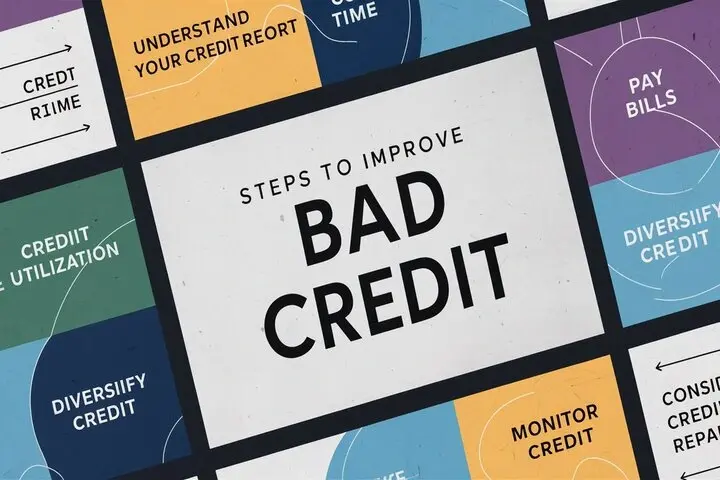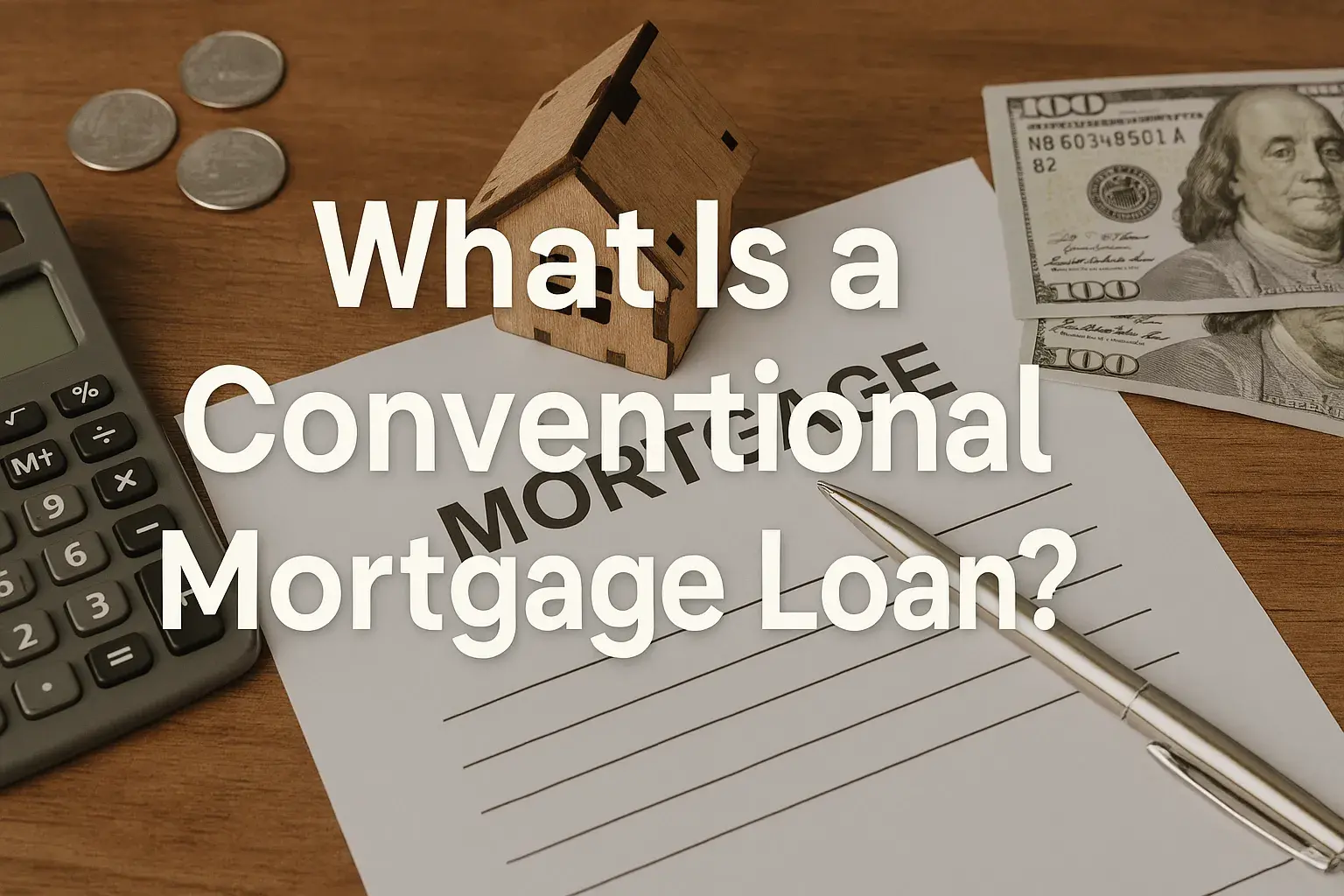-
Posted on: 26 Jul 2024

-
Having a bad credit score can significantly impact your financial life. It can affect your ability to secure loans, rent an apartment, or even get a job. While there's no magic wand to instantly erase bad credit, there are several proven strategies you can implement to improve your creditworthiness over time. This comprehensive guide will walk you through the steps you can take to rebuild your credit and achieve your financial goals.
Understanding Bad Credit and Its Impact
Before diving into the solutions, it's crucial to understand what constitutes bad credit and its potential consequences. Credit scores typically range from 300 to 850. Generally, a score below 630 is considered bad credit, while a score between 630 and 689 is considered fair. A score above 700 is generally seen as good credit. FICO and VantageScore are the two most common credit scoring models.
A low credit score can lead to:
- Higher interest rates on loans and credit cards
- Difficulty getting approved for loans or credit
- Higher insurance premiums
- Difficulty renting an apartment
- Challenges in securing certain jobs
- Needing to put down large deposits for utilities
Step 1: Obtain and Review Your Credit Reports
The first and most important step in repairing your credit is to obtain copies of your credit reports from all three major credit bureaus: Experian, Equifax, and TransUnion. You are entitled to a free credit report from each bureau annually through AnnualCreditReport.com.
Once you have your reports, carefully review them for any errors, inaccuracies, or outdated information. Common errors include:
- Incorrect account balances
- Accounts that don't belong to you
- Closed accounts listed as open
- Duplicate accounts
- Late payments reported incorrectly
Why is Reviewing Your Credit Report Crucial?
Even seemingly minor errors can negatively impact your credit score. Correcting these inaccuracies is a critical step in improving your credit.
Step 2: Dispute Any Errors on Your Credit Reports
If you find any errors on your credit reports, dispute them directly with the credit bureaus. You can do this online, by mail, or by phone, although online or mail are generally preferred for documentation purposes. Each bureau has its own process for disputing errors, so follow their specific instructions.
When disputing an error, provide as much supporting documentation as possible. This may include:
- Copies of account statements
- Payment confirmations
- Identity verification documents
The credit bureau is required to investigate your dispute within 30 days. If they find that the information is inaccurate, they must correct or delete it from your credit report. They will notify you of the results of their investigation.
Sample Dispute Letter Template (adapt to your specific situation):
[Your Name]
[Your Address]
[Your Phone Number]
[Your Email Address]
[Date]
[Credit Bureau Name]
[Credit Bureau Address]
Subject: Credit Report Dispute – Account Number [Account Number]
Dear [Credit Bureau Name],
I am writing to dispute the following information on my credit report. I obtained a copy of my credit report on [Date] from [Credit Bureau Name] and identified the following inaccuracies:
* [Describe the inaccurate information, e.g., "Incorrect account balance for account number 123456789. The balance is reported as $500, but the correct balance is $0."] * [Describe the inaccurate information, e.g., "Account number 987654321 does not belong to me."] * [Describe the inaccurate information, e.g., "Account number 555555555 is incorrectly reported as late. I have payment confirmation showing the payment was made on time."]
I am enclosing copies of [relevant documents, e.g., account statements, payment confirmations] to support my dispute.
I request that you investigate this matter and correct the inaccurate information on my credit report. Please provide me with written confirmation of the results of your investigation.
Thank you for your time and attention to this matter.
Sincerely,
[Your Signature]
[Your Typed Name]Step 3: Pay Down Your Existing Debt
One of the most effective ways to improve your credit score is to reduce your debt. High credit utilization, which is the amount of credit you're using compared to your available credit, is a major factor in credit scoring. Aim to keep your credit utilization below 30% on each credit card and overall.
Consider these strategies for paying down debt:
- Debt Snowball Method: Focus on paying off the smallest debt first, regardless of interest rate. This provides quick wins and motivates you to continue.
- Debt Avalanche Method: Focus on paying off the debt with the highest interest rate first. This saves you the most money in the long run.
- Balance Transfer: Transfer high-interest credit card balances to a card with a lower interest rate.
- Debt Consolidation Loan: Consolidate multiple debts into a single loan with a fixed interest rate and payment.
- Negotiate with Creditors: Contact your creditors and see if they are willing to lower your interest rate or offer a payment plan.
Step 4: Build a Positive Credit History
Once you've addressed any errors and started paying down debt, focus on building a positive credit history. This involves demonstrating responsible credit behavior over time.
Here are some ways to build positive credit:
- Make On-Time Payments: Payment history is the most important factor in your credit score. Set up automatic payments to avoid missing deadlines.
- Keep Credit Card Balances Low: As mentioned earlier, keep your credit utilization below 30%.
- Avoid Opening Too Many New Accounts: Opening several new credit accounts in a short period of time can lower your average account age and negatively impact your credit score.
- Consider a Secured Credit Card: If you have trouble getting approved for a traditional credit card, a secured credit card can be a good option. You'll need to make a security deposit, which typically serves as your credit limit.
- Become an Authorized User: Ask a trusted friend or family member with good credit to add you as an authorized user on their credit card. Their positive payment history can help improve your credit score.
- Credit-Builder Loan: These loans are specifically designed for people with bad credit or no credit history. You'll make fixed payments over a set period of time, and your payment history will be reported to the credit bureaus. The loan proceeds are often held in an account until the loan is paid off.
Step 5: Be Patient and Consistent
Repairing bad credit takes time and effort. There is no quick fix or overnight solution. Be patient and consistent with your efforts, and you will see improvement over time. It can take several months or even years to significantly improve your credit score, depending on the severity of your credit problems. Celebrate small victories along the way to stay motivated.
Red Flags to Watch Out For: Credit Repair Scams
Be wary of companies that promise to "erase" or "wipe clean" your bad credit quickly for a fee. These companies are often scams and can actually harm your credit. Legitimate credit repair involves disputing errors and building positive credit habits, which takes time and effort. You have the right to do this yourself for free. If a company asks for upfront fees before providing any services, it's a major red flag. Also, avoid companies that advise you to create a "new" credit identity with a false social security number. This is illegal.
Alternative Solutions: Credit Counseling and Debt Management
If you're struggling to manage your debt or improve your credit on your own, consider seeking help from a reputable credit counseling agency. Credit counselors can provide you with personalized advice and guidance on debt management, budgeting, and credit repair. They can also negotiate with your creditors on your behalf to lower your interest rates or create a payment plan.
Debt management plans (DMPs) are offered by credit counseling agencies. In a DMP, you make a single monthly payment to the credit counseling agency, which then distributes the funds to your creditors according to a pre-arranged agreement. DMPs can help you pay off your debt more quickly and at a lower interest rate.
When to Consider Bankruptcy
Bankruptcy should be considered a last resort, as it can have a significant negative impact on your credit score and your ability to obtain credit in the future. However, in some cases, bankruptcy may be the best option for dealing with overwhelming debt. There are two main types of bankruptcy for individuals: Chapter 7 and Chapter 13. Chapter 7 involves liquidating your assets to pay off your debts, while Chapter 13 involves creating a repayment plan to pay off your debts over a period of time.
Consult with a qualified bankruptcy attorney to determine if bankruptcy is the right option for you.











